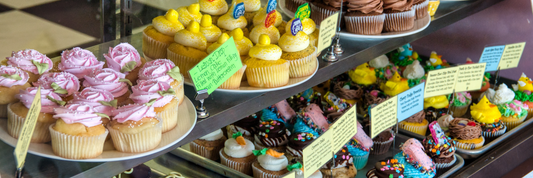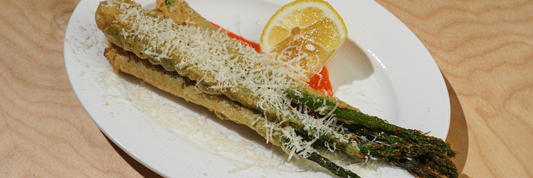In the food industry, presentation and preservation go hand-in-hand. But when it comes to selecting the ideal container for your products, the debate between glass and plastic jars often arises. Both offer distinct advantages and disadvantages, impacting everything from shelf life to cost-effectiveness. Let's find the answer to the question: "Glass Or Plastic Jar: Which Is Better for Food Storage?"
- Round Vs Square Glass Jars: Which Is the Best for Your Needs?
- How to Sterilize Jars Properly? Step By Step Guide
- Keeping Strawberries In a Glass Jar: Step By Step to Store Strawberries Last Longer
- How to Measure The Jar Lids? Guide to Buying Canning Jar Lid
Advantages and Disadvantages of Storing Food In Glass Jar
Advantages of Storing Food in Glass Jars
Glass jars have earned a prominent position in food storage due to their unique set of benefits:
- Chemical Inertness and Safety: Glass is a naturally non-reactive material, meaning it does not leach chemicals into the food stored within. This characteristic ensures optimal flavor preservation and food safety, making glass ideal for storing acidic foods or those sensitive to chemical interactions.
- Superior Preservation: Glass provides an exceptional barrier against air, moisture, and light, all of which are detrimental to food quality. This superior protection translates to extended shelf life, allowing food to retain its freshness, taste, and texture for longer periods.
- Hygiene and Ease of Cleaning: Glass is a non-porous material, making it exceptionally easy to clean and sterilize. This characteristic minimizes the risk of bacterial growth and ensures optimal food hygiene and safety, particularly crucial for long-term food storage.
- Sustainable Choice: Glass jars are highly recyclable, aligning with the growing demand for environmentally conscious practices. This eco-friendly aspect resonates with consumers and businesses alike, contributing to a more sustainable food storage solution.
- Enhanced Presentation and Appeal: The inherent transparency of glass allows for a clear and unobstructed view of the food within. This visual clarity enhances product presentation, creating a sense of quality and freshness that resonates with consumers and contributes to a positive brand image.

Disadvantages of Storing Food in Glass Jars
While glass offers numerous advantages, it also presents some limitations:
- Fragility and Weight: Glass jars are significantly heavier and more prone to breakage than their plastic counterparts. This fragility can be a disadvantage for transportation, rough handling, or situations where frequent movement is required.
- Cost Factor: Glass jars are generally more expensive than plastic containers, which can be a significant consideration for businesses or large-scale food storage applications. This cost difference may influence the choice of material depending on the specific needs and budget constraints.
- Limited Temperature Range: While some types of glass can withstand high temperatures, sudden temperature changes can lead to cracking or breakage. This limitation requires careful handling during freezing or reheating processes.
Overall, glass jars offer a compelling combination of safety, superior preservation, and environmental benefits. However, their fragility and cost require careful consideration, particularly in high-volume or rough handling situations.
Advantages and Disadvantages of Storing Food In Plastic Jars
Advantages of Storing Food in Plastic Jars
Plastic jars offer a multitude of advantages that make them a popular choice for food storage:
- Lightweight and Shatterproof: Plastic is significantly lighter than glass, making it easier to handle, transport, and store, particularly in large quantities. Additionally, its shatterproof nature minimizes the risk of breakage during transport or accidental drops, reducing product loss and potential safety hazards.
- Cost-Effectiveness: Plastic jars are generally more affordable than their glass counterparts, making them a cost-conscious option for businesses or individuals with budget constraints. This affordability can be especially beneficial for high-volume food storage or packaging.
- Versatility and Design Flexibility: Plastic offers a wider range of shapes, sizes, and colors than glass, allowing for greater customization and product differentiation. This versatility caters to diverse food products and packaging needs, enhancing product presentation and brand identity.
- Durability and Reusability: Many high-quality plastic jars are designed for long-lasting use and can be reused multiple times after proper cleaning. This reusability reduces waste and promotes sustainability compared to single-use options.
- Microwave and Freezer Safe: Certain types of plastic jars are specifically designed to withstand microwave and freezer temperatures, offering convenience for reheating or long-term storage. This versatility allows for a broader range of food storage applications.

However, it is crucial to acknowledge that plastic jars also come with certain limitations.
Disadvantages of Storing Food in Plastic Jars
There are different potential concerns when using plastic jars for food storage, including:
- Potential Chemical Leaching: Certain types of plastic, particularly those containing bisphenol A (BPA), can potentially leach chemicals into food, especially at high temperatures. While regulations exist to limit BPA use, choosing food-grade plastic with appropriate recycling codes is essential to minimize potential health risks.
- Limited Barrier Properties: Compared to glass, some plastics may not offer the same level of protection against air, moisture, and light penetration, which can accelerate food spoilage and affect taste or texture. This necessitates careful selection of plastic types based on the specific food being stored.
- Environmental Impact: While some plastic jars are recyclable, the overall environmental impact of plastic production and disposal remains a significant concern. Opting for reusable plastic jars and choosing recyclable types whenever possible can help mitigate this issue.
- Staining and Odor Absorption: Certain plastic materials are prone to staining and absorbing odors, which can be difficult to remove and impact the visual appeal and taste of stored food. Selecting high-quality plastic and practicing proper cleaning techniques are crucial to maintain hygiene and prevent flavor contamination.
Glass Or Plastic Jar: Choosing the Right Jar for Your Food
Selecting the ideal jar for your food requires careful consideration of several factors, ensuring both optimal preservation and practical functionality. Choosing a glass or plastic jar? Here's a breakdown to guide you:
- Material:
- Glass: Ideal for long-term storage, chemical-free preservation, and aesthetic appeal. Choose glass for foods sensitive to chemical leaching, like acidic fruits or delicate flavors. However, consider its weight, fragility, and cost.
- Plastic: Offers affordability, lightweight design, and versatility in shapes and sizes. Opt for plastic for frequent handling, rough environments, or budget-conscious needs. Be mindful of potential chemical leaching and limited gas barrier properties.
- Food Type:
- Dry Goods: Glass or plastic jars are suitable for dry foods like grains, pasta, or nuts. Choose airtight lids to prevent moisture and pest infestation.
- Wet Foods: Glass is generally preferred for wet foods like sauces, jams, or pickled vegetables due to its superior barrier against air and light. Plastic can be suitable for short-term storage, but consider potential staining and odor absorption.
- Fatty Foods: Glass jar is recommended for fatty foods like oils or nut butters as plastic may absorb flavors and potentially leach chemicals.
- Size and Shape:
- Capacity: Choose the appropriate size based on the amount of food you intend to store. Consider portion sizes and frequency of consumption to avoid unnecessary waste or insufficient storage.
- Mouth Size: Regular mouth jars are suitable for pourable liquids, while wide-mouth jars are ideal for larger food items or easier filling.
- Shape: Specialized shapes like square or rectangular jars can maximize space utilization in storage areas.
- Additional Considerations:
- Lids: Ensure airtight lids that create a proper seal, preventing air and moisture exchange. Choose lids compatible with the jar material and suitable for your storage method (e.g., canning, freezing).
- Durability: Consider the intended use and handling frequency. Glass offers superior long-term durability, while plastic might require more frequent replacement due to potential wear and tear.
- Sustainability: Glass is generally considered more environmentally friendly due to its recyclability. Opt for plastic with recycling options if environmental impact is a priority.
By carefully evaluating these factors and aligning them with your specific food storage needs, you can make an informed decision and choose the optimal jar for your food.
Conclusion
The optimal jar for your food storage depends on a careful balance between material properties, food type, intended use, and personal preferences. So, which should you choose? Glass or plastic jar? Glass offers superior safety, preservation, and aesthetics, while plastic provides practicality, affordability, and versatility. By understanding the advantages and disadvantages of each, and considering the specific needs of your food and storage situation, you can make an informed decision that ensures optimal freshness, safety, and convenience.




